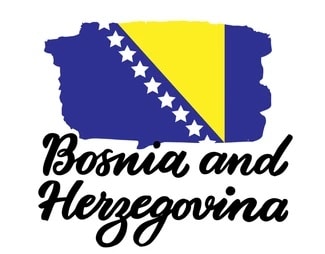Headlines
Bosnia and Herzegovina Population, Official Language And More.

The incorporation of Bosnia and Herzegovina into Yugoslavia after World War I and World War II.
The breakup of Yugoslavia and the Bosnian War (1992-1995), which resulted in genocide, ethnic cleansing, and massive displacement.
The Dayton Peace Agreement in 1995, which ended the war but also created a fragile and divided state structure.

Bosnia and Herzegovina
The Population
According to the World Bank, the population of Bosnia and Herzegovina was estimated at 3.28 million in 2020. The population is composed of three main ethnic groups: Bosniaks (50.1%), Serbs (30.8%), and Croats (15.4%), as well as other minorities such as Roma, Jews, Albanians, and Montenegrins. The population is also divided by religion: Islam (51%), Orthodox Christianity (31%), Roman Catholicism (15%), and other faiths (3%). The population has been declining since the 1990s due to low fertility, high emigration, and the effects of the war.
The Landmarks
Bosnia and Herzegovina has many landmarks that reflect its rich and diverse cultural heritage. Some of the most famous ones are:
The Stari Most (Old Bridge) in Mostar, a 16th-century Ottoman bridge that was destroyed during the war and rebuilt in 2004.
The Sarajevo Tunnel, a secret underground passage that was used to supply the besieged city during the war.
The Srebrenica-Potočari Memorial and Cemetery, a site that commemorates the victims of the genocide that occurred in 1995.
The Baščaršija, the old bazaar and historical center of Sarajevo, where you can find mosques, churches, synagogues, museums, and shops.
The Mehmed Paša Sokolović Bridge in Višegrad, a 16th-century Ottoman bridge that was immortalized in the novel The Bridge on the Drina by Nobel laureate Ivo Andrić.
The Official Language
Bosnia and Herzegovina has three official languages: Bosnian, Croatian, and Serbian. They are all derived from the former Serbo-Croatian language and belong to the South Slavic branch of the Indo-European language family. They are mutually intelligible to a large extent, but they differ in some vocabulary, grammar, pronunciation, and writing systems. Bosnian uses both Latin and Cyrillic scripts, while Croatian uses only Latin and Serbian uses mostly Cyrillic. There are also some regional dialects and minority languages spoken in the country.
The Culture
The culture of Bosnia and Herzegovina is influenced by various historical and geographical factors. It reflects the legacy of ancient civilizations, such as the Illyrians, Romans, and Byzantines; the medieval kingdoms of Bosnia and Herzegovina; the Ottoman Empire; the Austro-Hungarian Empire; Yugoslavia; and the modern state. It also reflects the diversity of ethnicities, religions, languages, and traditions that coexist in the country. Some of the aspects of the culture are:
Literature: Bosnia and Herzegovina has produced many notable writers, such as Ivo Andrić, Meša Selimović, Mak Dizdar, Zlata Filipović, Aleksandar Hemon, and Saša Stanišić.
Music: Bosnia and Herzegovina has a rich musical tradition that includes folk music, sevdalinka (urban love songs), turbo-folk (pop-folk), rock, rap, metal, jazz, and classical music. Some of the famous musicians are Dino Merlin, Goran Bregović, Bijelo Dugme, Dubioza Kolektiv, Hari Mata Hari, Amira Medunjanin, and Damir Imamović.
Art: Bosnia and Herzegovina has a long history of artistic expression that spans from prehistoric cave paintings to contemporary art. Some of the prominent artists are Safet Zec, Mersad Berber, Ismar Mujezinović, Jusuf Hadžifejzović, Mladen Miljanović, Adela Jušić, and Lana Čmajčanin.
Cuisine: Bosnia and Herzegovina has a diverse cuisine that reflects its geographical location and cultural influences. It combines elements of Mediterranean, Turkish, Central European, and Balkan cuisines. Some of the typical dishes are ćevapi (grilled minced meat), burek (filled pastry), dolma (stuffed vegetables), begova čorba (chicken soup), baklava (sweet pastry), kahva (coffee), and rakija (fruit brandy).
THE ECONIMIC STABILITY: Bosnia and Herzegovina’s economic stability is affected by several factors, such as its political situation, its integration with the European Union, its recovery from the COVID-19 pandemic, and its dependence on external financing. Here are some key points about its economic stability:
Bosnia and Herzegovina’s stability and security are important for the stability and security of the Western Balkans region, which is a strategic objective of the United States.
Bosnia and Herzegovina is facing new economic headwinds, despite a better-than-expected rebound from the recession caused by the COVID-19 pandemic. It is expected to grow by 3.5% in 2021, but still face challenges such as high unemployment, low productivity, weak governance, and social inequalities.
Bosnia and Herzegovina is an upper middle-income country that has accomplished a lot since the mid-1990s. It is an EU potential candidate country and is now embarking on a new growth model that aims to increase competitiveness, innovation, and inclusion.
Bosnia and Herzegovina’s economic stability depends largely on external financing, especially from the International Monetary Fund (IMF), which provides loans in exchange for reforms. However, the implementation of these reforms has been slow and uneven, due to political fragmentation and resistance from vested interests.
The GDP: The Gross Domestic Product (GDP) of Bosnia and Herzegovina was worth 24.53 billion US dollars in 2022, according to official data from the World Bank. It is expected to grow to 24.92 USD Billion by the end of 2023.
The currency: The currency of Bosnia and Herzegovina is the convertible mark, with symbol KM and code BAM. It is pegged to the euro at a fixed rate of 1 EUR = 1.95583 BAM. One US dollar is equal to 1.80 BAM.
The food: Bosnia and Herzegovina has a rich and diverse cuisine that reflects its multicultural heritage. Some of the most popular dishes are ćevapi (minced meat sausages), burek (flaky pastry filled with meat, cheese or spinach), dolma (stuffed vegetables), klepe (meat dumplings), and baklava (sweet pastry with nuts and honey).
Major cities: The capital and largest city of Bosnia and Herzegovina is Sarajevo, with a population of about 275,000 people. Other major cities include Banja Luka, Tuzla, Zenica, Mostar, and Bihać.
Major airport, sea port and schools: The main international airport of Bosnia and Herzegovina is Sarajevo International Airport, located near Sarajevo. The country has no sea port, as it has a very short coastline on the Adriatic Sea. The main schools in Bosnia and Herzegovina are the University of Sarajevo, the University of Banja Luka, the University of Tuzla, the University of Zenica, the University of Mostar, and the University of Bihać





